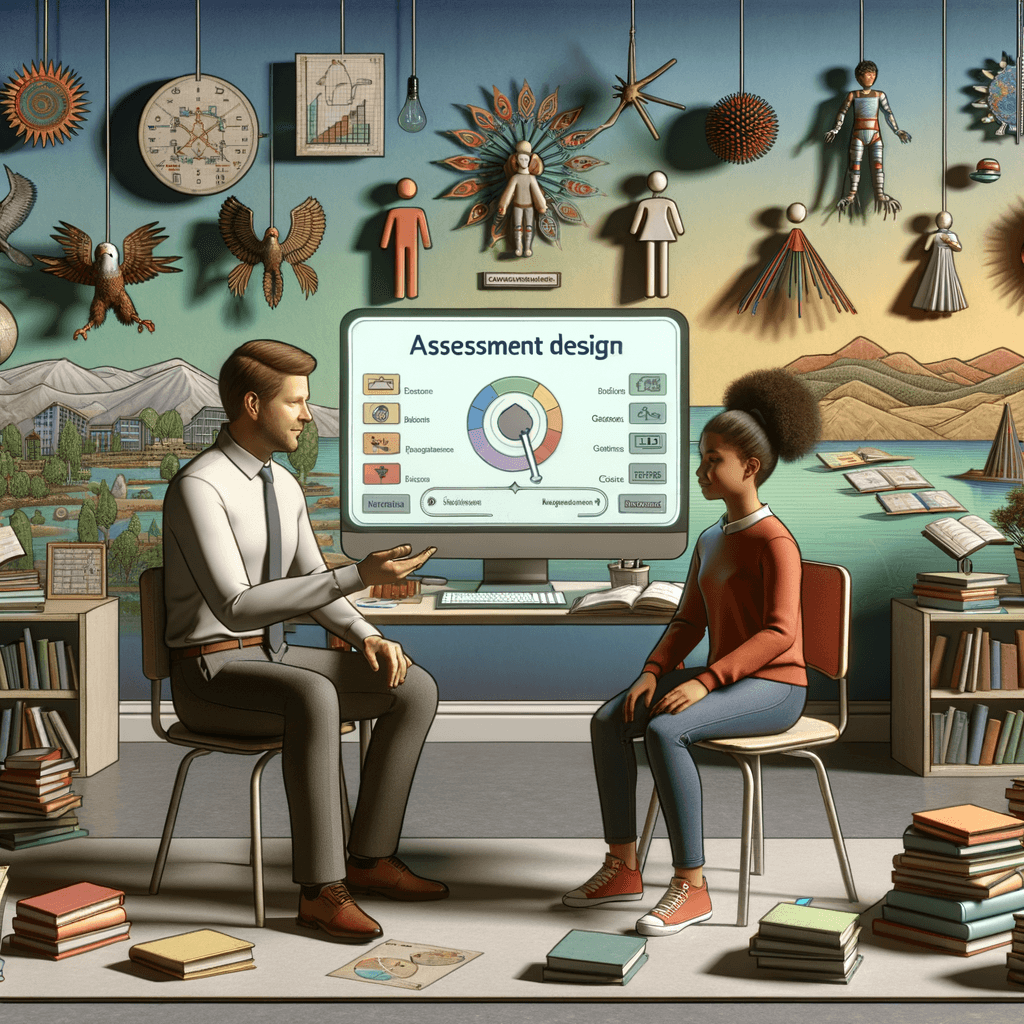In today’s educational landscape, fostering student ownership and engagement has become a paramount goal for educators. By empowering students to take an active role in their learning, we can create a more meaningful and effective educational experience. One powerful way to achieve this is through student-teacher conferencing for report cards. By engaging in a collaborative and reflective dialogue, both students and teachers can co-design the assessment process, ensuring that it is personalized, holistic, and focused on growth.
Co-designing and Sharing the Learning Process
One of the foundations of conferencing for report cards is the established partnership between students and teachers. Through co-designing and sharing the responsibilities of the classroom, students have developed a sense of agency and ownership over their learning. They actively contribute to shaping the learning process and outcomes, making them valuable partners in education (Johnson, 2017).
Leveraging Thinking Routines and Reflection
Students who have been accustomed to using thinking routines and engaging in reflective practices are well-prepared for conferencing. By being critical of their thinking, analyzing their learning, and making connections across different subjects, students develop a deep understanding of their own growth. Incorporating these thinking routines and reflections into conferencing sessions enables students to further deepen their understanding and make meaningful connections (Ritchhart et al., 2011).
Personalized Goal Setting and Planning
Setting personalized goals and planning the learning process are key components of student ownership. Students who are accustomed to reflecting on their goals, documenting their growth, and curating evidence of their learning have a strong foundation for conferencing. These goals and the process of working towards them will guide the discussion in conferencing sessions, allowing students to reflect on their progress and set new targets (Black & Wiliam, 2009).
Questions as Catalysts for Learning
Inquiry-based learning has long been recognized as a powerful approach to foster student agency and curiosity. By encouraging students to explore conceptual questions and respond to guiding questions, educators promote independent thinking and active engagement. Guiding questions play a central role in shaping conferencing discussions, enabling students to take the lead in their learning journey (Darling-Hammond et al., 2019).
Feedback as a Tool for Growth
Feedback is a crucial element in the learning process, and students who understand its value are better equipped to embrace conferencing. By viewing feedback as a means to dig into learning and plan next steps, students recognize that the essence of learning lies not in marks or grades but in the iterative process. The feedback received throughout the year forms the basis for fruitful discussions during conferencing sessions (Hattie & Timperley, 2007).
Building Trust and Self-Assessment Skills
Nurturing strong relationships in the classroom fosters trust, honesty, and vulnerability. As students develop their assessment skills under the guidance and modeling of their teachers, they become capable of accurately and confidently self-assessing their progress. This trust and self-assessment compass form the basis for meaningful discussions during conferencing (Wiggins, 2012).
Emphasizing Process over Product
In conferencing for report cards, the focus is shifted from a mere assessment of final products to an examination of the entire learning process. Students, who have been actively gathering evidence of their learning and curating both highlights and challenges, are equipped to engage in reflective conversations. By discussing their learning journey, students gain insights into their strengths, weaknesses, and growth areas (Danielson, 2007).
Talk as an Assessment Method
Conferencing provides a platform for students to engage in meaningful dialogue with their teachers. Through these conversations, students can reflect on their thinking, discuss their understanding, and unpack feedback from both teachers and peers. Talk becomes an essential assessment method, allowing students to demonstrate their knowledge, articulate their learning process, and showcase their growth (Heritage, 2010).
Conferencing for report cards represents a transformative approach to assessment that nurtures student ownership and engagement. By aligning with the principles of co-design, reflection, personalized goal setting, questioning, feedback, trust, process-oriented assessment, and talk-based assessment, conferencing empowers students to take an active role in their learning. It shifts the focus from mere grades and marks to holistic growth and development.
By embracing conferencing as an integral part of the assessment process, educators can empower students to take ownership of their learning, deepen their understanding, and foster a lifelong love for learning. Together, teachers and students can embark on a collaborative journey that celebrates growth, promotes reflection, and ensures that assessment truly serves as a catalyst for meaningful education.
References
Black, P., & Wiliam, D. (2009). Developing the theory of formative assessment. Educational Assessment, Evaluation, and Accountability, 21(1), 5-31.
Danielson, C. (2007). Enhancing professional practice: A framework for teaching (2nd ed.). ASCD.
Darling-Hammond, L., Hyler, M. E., & Gardner, M. (2019). Effective teacher professional development. Learning Policy Institute.
Hattie, J., & Timperley, H. (2007). The power of feedback. Review of Educational Research, 77(1), 81-112.
Heritage, M. (2010). Formative assessment: Making it happen in the classroom. Corwin Press.
Johnson, K. (2017). Student voice: The instrument of change. In Authentic learning experiences (pp. 3-23). Springer.
Ritchhart, R., Church, M., & Morrison, K. (2011). Making thinking visible: How to promote engagement, understanding, and independence for all learners. Jossey-Bass.
Wiggins, G. (2012). Seven keys to effective feedback. Educational Leadership, 70(1), 10-16.
